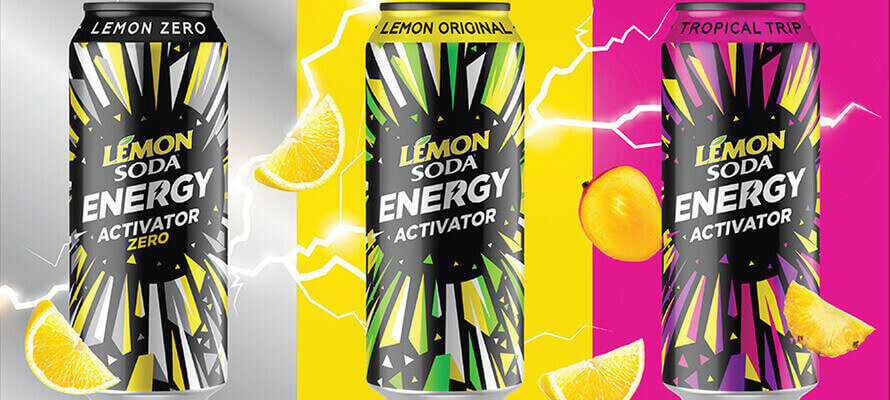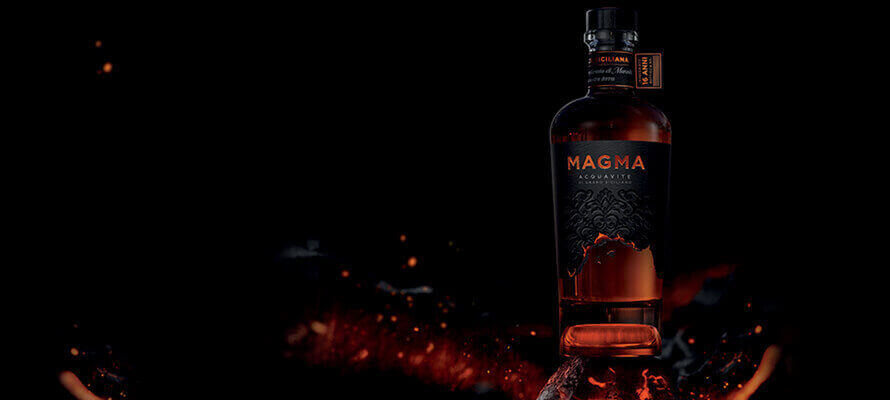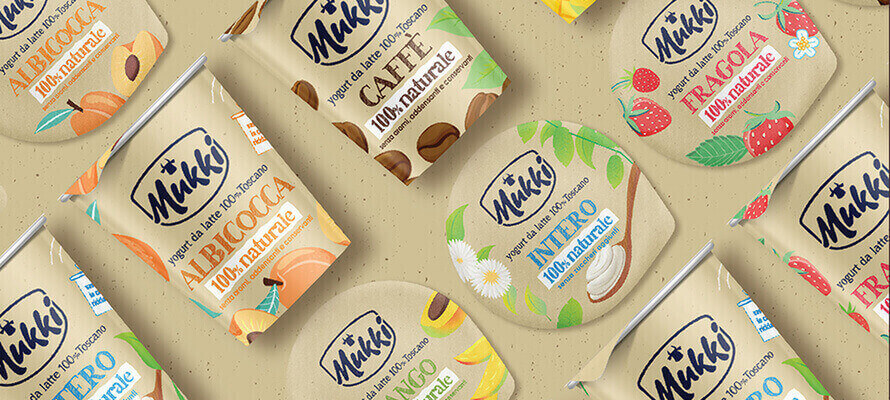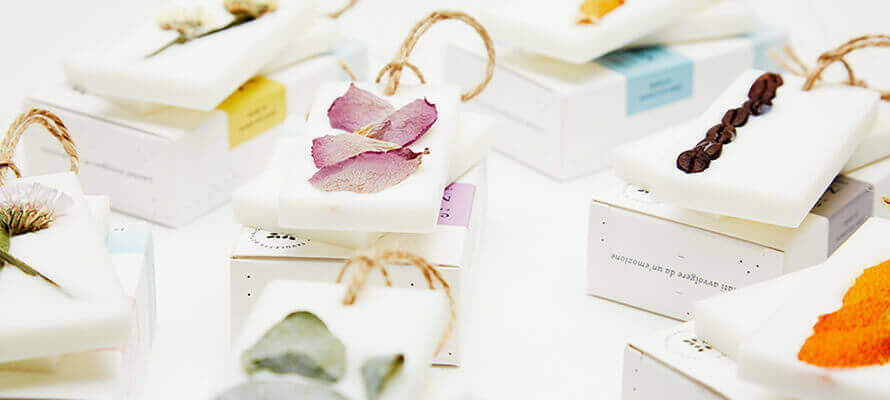Smith Lumen: the future we dream of
It's time to reinvent yourself, both for companies and those responsible for brand communication. Because embracing change is the antidote to uncertainty: we're talking about it with Matteo Leonti, General Manager of Smith Lumen, an agency whose portfolio includes clients such as Nestlé, Ferrero, Twinings, Asahi Group and Royal Unibrew and which, almost twenty years after its foundation, has just changed its positioning and attitude.
By Michela Pibiri | on PRINTlovers #91
Soaring ceilings and spaces flooded with natural light. The headquarters of Smith Lumen, inaugurated a few months ago, still smells of new furniture and hopes for an equally bright future, even though it carries with it all the charm of a Milan that no longer exists and of industrial archaeology converted into a creative hub. Here at Via Pestalozzi 4, the boats that sailed along the canals and converged in the not too distant Darsena were once repaired so they could resume their trading journeys with the wind at their backs. Today a different wind, that of change, animates an area of the city in great cultural ferment in which it is not difficult to create links between skills that are also very distant from each other. A few details are still missing - the final touches that will personalise the spaces - but we are already being welcomed home by Matteo Leonti, General Manager, and Matteo Bonetti, Business Developer of Smith Lumen, the creative agency founded by Drew Smith in 2003, which is the lead player and promoter of this change. Matteo Leonti tells us how.
PRINTlovers and Smith Lumen met five years ago. And in the meantime, many things have happened in the world. What has changed for you?
Five years for an agency like ours is a very long time, in which there has been room for significant evolutions and changes: the change of location, which has seen us leave Via Tortona to become part of the new creative hub in Via Pestalozzi; the reorganisation of people, which among other things has seen the consolidation of my role as General Manager of the agency; the change in the business model and, last but not least, a new approach to clients. What we undertook was a journey of introspection, both personally and professionally, starting with the question: "how do we solve a problem?". The answer was to embrace the change that has become necessary, especially in the last two years, to redefine the future we dream for ourselves. After 20 years of existence, the agency decided to establish a 'zero point' to rebuild its future and take the plunge to put uncertainty to rest.
But let's start with the first of the changes: the new headquarters, which did not come about by chance...
The new space at Via Pestalozzi 4 in Milan synthesises a decision that marks a change in positioning and attitude. The situation in 2020 was a complex one, in which the priority was to make people and the business safe first and foremost. Still, despite the difficulties, we saw an increase in turnover that was consolidated in 2021. Now we have a strong need to find ourselves and open up to the world. We don't want to go back to what we had before the pandemic, but to do things differently, broaden our horizons, and create integration between different professions, including photographers, calligraphers, and industrial designers... The new space gives us a different scope, and it has allowed us to organise spaces for working both in person and from home. We have also provided stations for temporary collaborations so that the various professionals involved can also physically enter the agency and participate in co-creation processes with clients. We are in an area undergoing a tremendous creative evolution, less "glossy" than Via Tortona but rich in stimuli and connections between photographic studios, illustrators, architects, cartoonists, tattoo artists and high-quality artisans such as our neighbours in Officine Creative, who specialise in leather craftsmanship.
Who are your customers today?
Most of them are companies active in the food & beverage sector. They come in different types, from large global multinationals such as Ferrero, Twinings, Nestlé, Asahi Group to smaller companies present in specific geographical markets, such as Podravka and Pladis, to national companies such as Star, Centrale del Latte d'Italia and Lemonsoda, the wineries Tenute Venturini Foschi, La Sabbiosa or the baby food brand Humana. New companies are building their own identities with us from scratch, too; we also work with material suppliers such as Avery Dennison, Kurz and Estal.
What is the approach with them today?
Co-creation. Clients and suppliers are involved in the design process from the very beginning to embark on a shared journey. This simplifies customer loyalty and the professionalism involved throughout the process. We have rationalised the methodology applied to projects, basing everything on listening, sharing dreams, and achieving goals. The first step is to identify the type of consultancy to be provided to the client, divided into three macro-areas: "Makeover" defines consultancy for brands that want to adapt to a changing world, and we help them manage this change in an upgrade logic. "Brand coaching" is the consultancy dedicated to projects that want to change and innovate: the objective is to understand with the client the areas of solid innovation on which to focus. "New born brand" is a kind of brand nursery: it is the support we offer to companies from their zero point, whether start-ups or established companies that want to differentiate their offer and enter new markets.
What is the most significant change in your internal organisation?
At the moment, there is a need for a new concept of leadership: increasingly inclusive, not based on seniority but on competence, empathy and the ability to work as a team. Therefore, depending on the project, we identify the most suitable figures to develop and manage it, but the coordination of the group is not the responsibility of a single person but of the group itself.
What do clients ask of you?
We are at a turning point as if we all had to start from scratch. But the fundamental question is: how can what we have built so far be used to be relevant today? This is true for us as an agency, but it is also true for our clients, even the biggest and most established brands, who wanted to put a point and build something new from there. Redefining oneself as a leader, not only in terms of gaining or consolidating one's market share but in the ability to create new discourses: with innovative products, offering one's point of view, talking, expressing oneself. Innovations will be those capable of giving voice to their own identity. And it is here that customisation and personalisation are increasingly becoming ways of expressing oneself uniquely and authentically.
What are the main trends in brand communication at the moment?
We have an analysis and strategy department that intercepts and analyses trends and needs. Right now, we have identified four main trends.
The first is - no surprise - sustainability. But the successful brands are those that have made sustainability an ingrained value within the company. The pack is just the last link in the chain, the expression of a philosophy that must start with the product: it is not enough on its own. If the company does not have this culture, it is preferable to emphasise other differentiating aspects of the brand and possibly communicate the objectives it has set itself. The brand has to educate and help the consumer to consume more consciously.
The second trend is linked to wellbeing. We have moved, partly because of the pandemic, from functional wellbeing linked to the specific characteristics of products to emotional wellbeing, i.e. what products can represent in people's lives. And so from prescriptive messages, which often had to do with renunciation, to messages that go deep inside, in search of the self. Wellness today is about doing the right thing.
Then there is entertainment. Covid has undoubtedly accelerated the trend of entertaining and offering an escape from what is not gratifying in everyday life. Today, it is essential to create content that can engage the consumer in the brand's journey.
Finally, premiumness: a concept that has changed a great deal in recent years. Historically linked to an expression of status, today it is an expression of value, that of good things. It is better to spend more but buy less. Therefore it is necessary to explain the good cause that the product espouses: artisanship, for example, or the link with the local area, social and environmental commitment and so on.
Which of your projects best express these four trends?
The project for Mukki, a brand in the Centrale del Latte d'Italia group, is a perfect example of sustainability as a brand philosophy. We created the new line of recyclable paper pots for yoghurt, but the packaging is just the last piece of a path of transformation and responsibility for the territory and animal welfare, a way of communicating this process.
In the entertainment field, we can mention Lemonsoda, for which we worked on the product development of an energy activator line that has a different positioning compared to the more classic lines: balanced drinks that combine the natural component of fruit with the presence of vitamins. We chose to call the product 'energy activator' and not 'energy drink' because we don't say what it is, but what it does: it activates energy through its ingredients.
As far as premiumness is concerned, the Magma project - developed with suppliers Avery Dennison, Kurz and Estal - was an expression of the agency from the study of a product that does not yet exist on the market to the creation of the packaging in a logic of effective machinability. Premiumness is not only expressed in the extreme refinement of the design and materials chosen but starts with the storytelling of the product, closely linked to a magical territory and savoir-faire.
Emozionaria, finally, is a new brand with a medium-high positioning that embodies all the trends we have talked about. Their products are room fragrances: candles, diffusers and tablets, but their aim is not to sell fragrances but emotions, thus placing themselves in the sphere of emotional wellbeing to be achieved through the functionality of the products. The supply chain is controlled, high quality, local and sustainable: all made in Italy, vegan-friendly thanks to the use of soy wax, natural essences and sustainable materials in the packaging. This is a digital native brand positioned in an already crowded market. To create the product experience also in digital, we have devised a gaming experience that allows the consumer to identify the most suitable fragrance. At the same time, we are working to develop the analogue side through physical touchpoints without distorting the brand's digital identity and values.
Magma
Sicilian wheat brandy
-
The design tells the story of the environment in which the product was born. The base represents basalt, the cooling lava; the orange colour, representing hot lava, breathes life into the grooves and creates burns for emphasis. Black on black embossing, inspired by Sicilian majolica, creates a dramatic effect that triggers an emotional connection with the consumer. Offset and screen printing, embossing and hot stamping are carried out by Grafical on Avery Dennison's Fasson Cotton Black paper. Nobilitations Kurz, Estal DA Clarior 70 cl. bottle.
Lemonsoda Activator
-
An explosion of bright, vibrant shards on the can represents the energy activated by the product. A simple, direct and essential message that at first glance tells you everything you need to know about this innovative product from Royal Unibrew.
Mukki Yoghurt
-
100% recyclable paper has been used for the jar instead of plastic: this choice is clearly indicated on the packaging. The creative approach enhances this plus by aligning with the grammar of the organic category. Warm pastel colours, a textured background and illustrations reinforce the value and positioning message.
Matteo Leonti
He graduated in Marketing, Branding & PR from IULM in Milan and joined Smith Lumen in 2006. Over the years, he held various internal positions until he became the agency's General Manager. Deeply passionate about branding, communication and pack design, his expertise lies in the FMCG world and the Luxury Goods market (wine & spirits). His innate aptitude for internationality has enabled the constant expansion of the structure beyond national borders, establishing Smith Lumen on the global creative scene.
Smith Lumen
Founded in 2003 by Drew Smith, Smith Lumen's early years saw significant and consistent growth in both the packaging design and corporate sectors. The first important milestone came in 2005 when, having acquired Ferrero as a client, Drew became "The Canadian" for the entire Piedmontese company. Years of expansion followed, and in 2009 Smith Lumen had around 50 employees and five units scattered around the world: London, Dubai, Sao Paulo, Hong Kong and Moscow. At the beginning of 2013, the corporate business was sold to focus on consumer branding. In the year of its 18th anniversary, Smith Lumen leaves its historic Milan headquarters in Via Tortona 4 to move into the new communications hub in the San Cristoforo district, strongly affirming the constant desire for innovation and change that has marked the agency's history.






